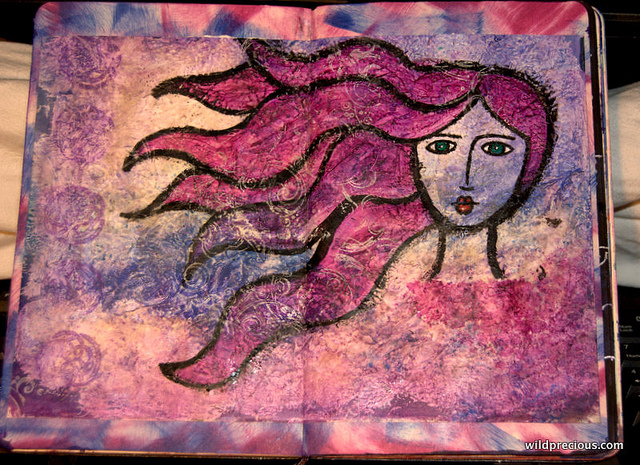An art journal is all about an artist’s self expression that is captured on record. The recorded matter can be as diverse as a specific subject or event or may even be the life of the person at that point of time. An art journal typically gives its creator a chance to visualize creative feelings that can be explored. Art journaling does not conform to any rules.
Art Journaling as a Form of Art
The earliest art journals contained observations of the daily life as well as other transactions. However, as more people in the world became enlightened, events, ideas and reflections started filling these journals. Over the years, it has evolved into an art form and is expressed through different media. However, the basis about the art form remains the same: it is not about the outcome, but about the process.
Different people have different reasons for keeping art journals that are individual and personal. Maintaining an art journal has given a chance for the more creative individuals to toy with art ideas and techniques which are never in short supply, to put down one’s thoughts and feelings on the medium (ideas and feelings of different people are never the same), to document one’s being or one’s life in any medium that he/she wishes, and for the clear majority making an art journal is the enjoyment derived through the creation process.
For the most creative among individuals, containing the art within the self is a very difficult thing to do and an art journal, perhaps, is the easiest way to get out with it.
Types of Art Used for Art Journaling
Conventional art journals were handmade, and more modern ones are sewn bound or spiral bound or others just exist online. Many of the famous personalities like Vincent Van Gogh were known to use moleskins to hold art journals. Both DaVinci and Picasso maintained sketchbooks.
Art journals need not be all on paper. An art journal can be created from just about anything. You can create an art journal in any medium you want and mixed media art journaling is becoming more popular.
Creative artists visualize their ideas on the digital medium, print them out and later add charms, paint, fabric or colors. Some of them choose to reverse the entire idea. After having created a painted/colored/stitched background, you can scan it to make it digitally available. You can create different pages with embellishments for your online art journal or visual diary.
Other diverse media include quilts, online digital themed art journals, scrapbook, wishes journal, junk journal made out of junk, among others. Collages made out of magazine images can be used to express feelings and thoughts. For that matter, so can photographs. Doodled expressions with ink on paper can be just as good. Artists use beads, quilts and even sand to express ideas and thoughts. This list is not exhaustive and can get as extensive as one’s imagination.
How to Get Started in Art Journaling
Before setting out to create an art journal, remember that you cannot make any mistakes in art journaling. Do not compare with anything else that already exists and this is half the job done. To start working on an art journal you also do not need a dedicated work space.
Art journalists keep an array of materials handy to work with. It is a good idea to collect free things that you may find interesting: paper stubs, Polaroid photos, tickets, stamps, magazine cutouts, fabric waste, sponge, ribbon, and written lists, etc. Keep the materials organized till you are ready to use them. Depending on the medium that you are going to use, look out for paper pads, draft paper, fabric, boards, cereal box, metal plates, or anything else that catches your fancy.
Acrylic colors, inks, thread, wool fibers, natural dyes, or any other form of colors can be used. You can experiment up to one hundred percent. Gesso, a primer, comes in handy when layering, lightening collages and creating pastels (white gesso). Brushes, adhesives, cookie cutters (for stamping), marker pens, staples, masking tapes, glue sticks, etc., are other supplies that can help.
Old credit cards can help to push the paint or gesso around and is a favorite tool among art journalists. If your medium is paper, placing your artwork between sheets of parchment paper with weight on top can help in drying them flat.
If you are planning online art journaling, ensure that you are familiar with the requisite software that you need to create them. Ensure that they are installed in your computer and you are ready to start.
It is worthwhile to go through art journals, many of which are available online, for new ideas. Most importantly, it is a good idea to latch up with an online art journaling community for help, inspiration and motivation.


Leave a Reply